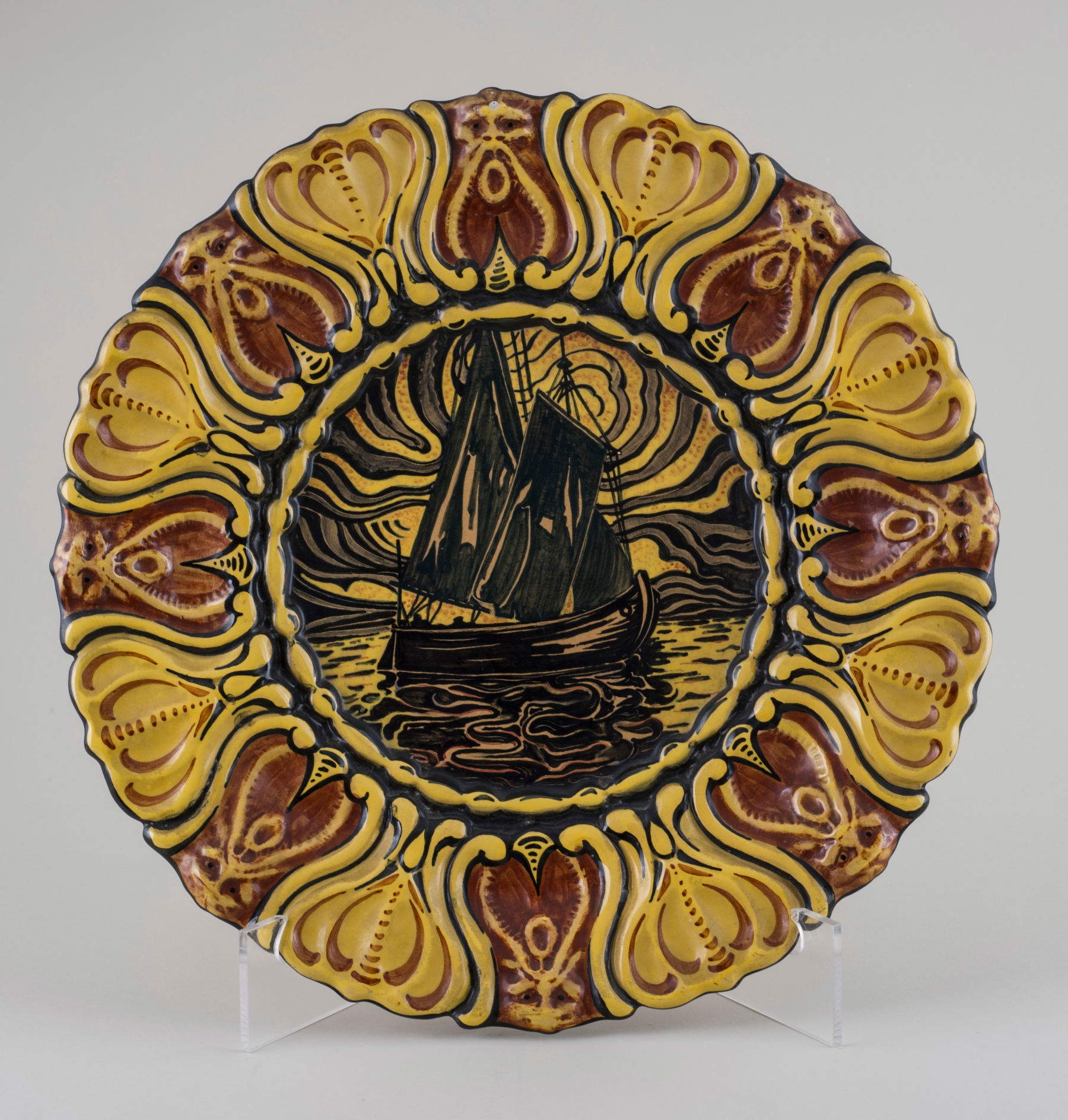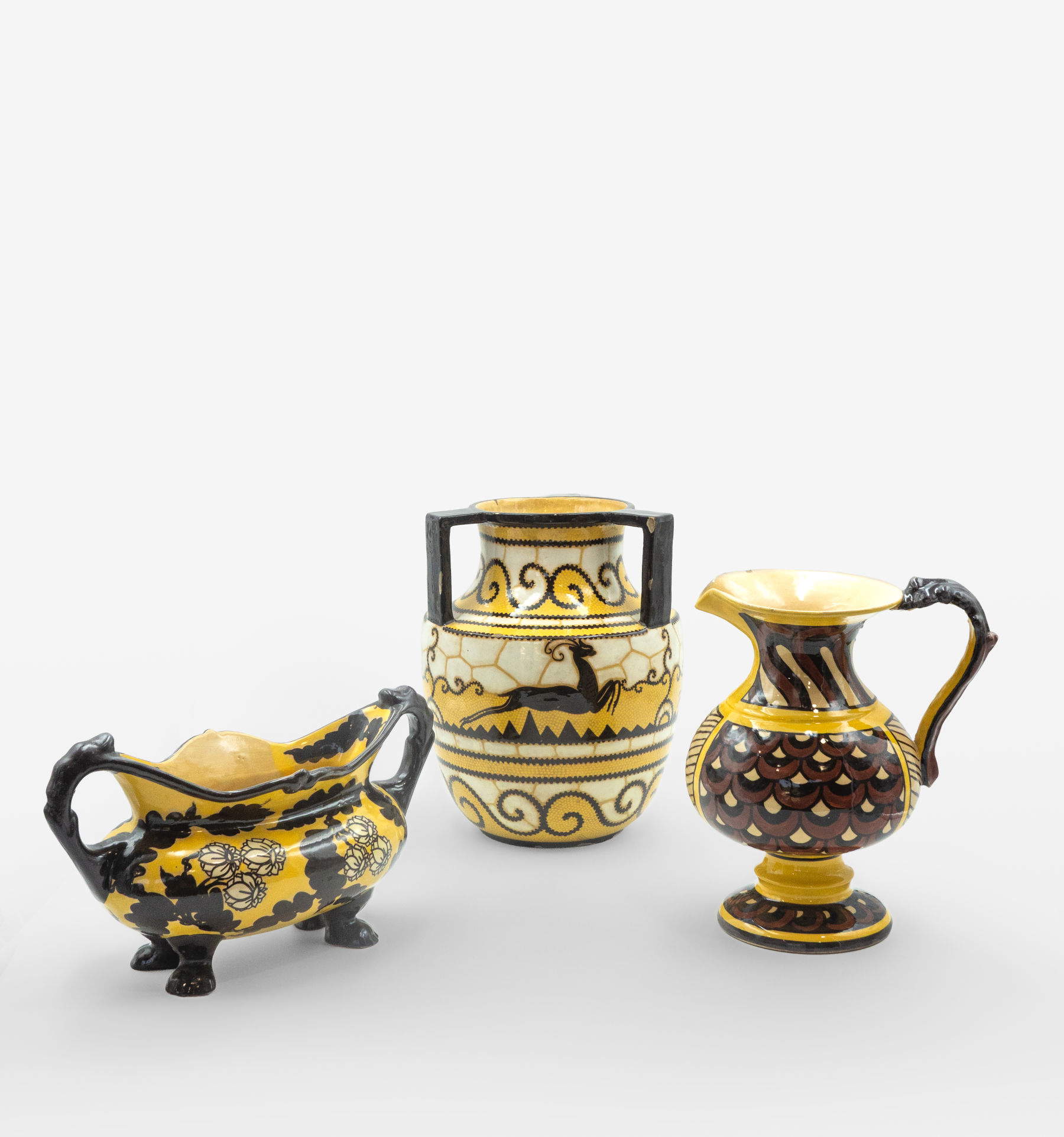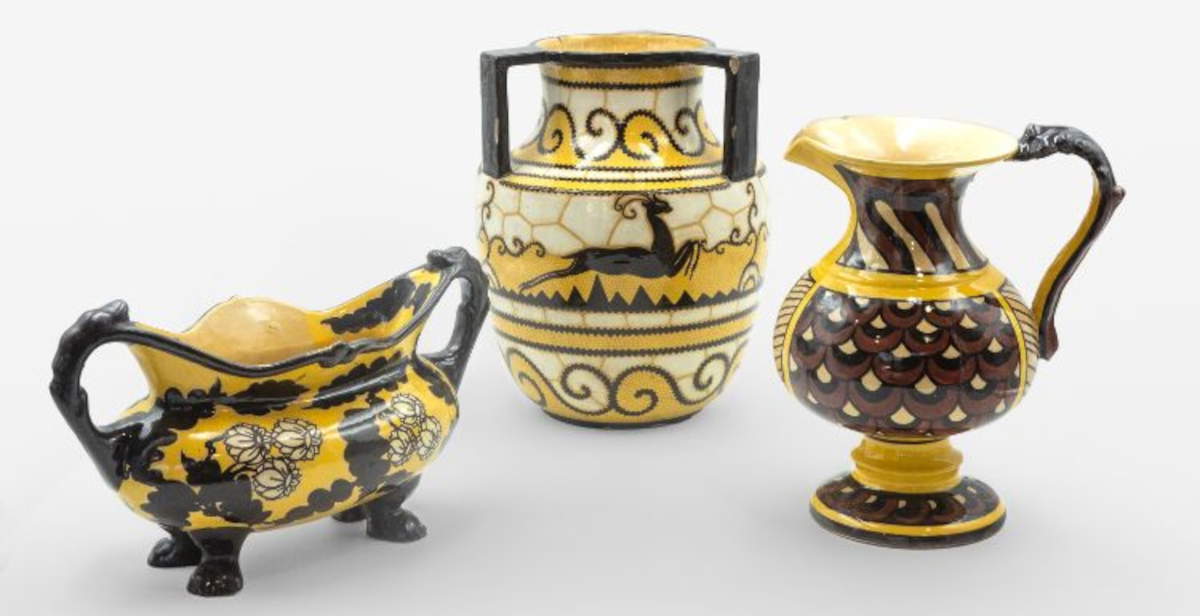The Museum of Ceramics in Savona is hosting, from October 23, 2025 to March 1, 2026, the exhibition Nel tempo del Déco. Albisola 1925, an exhibition project that reconstructs the birth, development and fortune of the ceramic style that developed in Liguria in the 1920s, in parallel with the international trends ofArt Deco. Curated by Donatella Ventura and Stella Cattaneo, the exhibition is promoted on the occasion of the centenary of the 1925Exposition Internationale des Arts Décoratifs et Industriels Modernes in Paris, under the patronage of the City of Savona and the Italian Association of Ceramic Cities (AICC). This is the first wide-ranging exhibition project entirely dedicated to the decorative style that, born in a local context, established itself as a recognizable and influential language on the national scene.
The exhibition, divided into several thematic sections, brings together more than 300 ceramic artifacts from public and private collections, presenting an extensive and documented overview of the style defined Albisola 1925byart historian Rossana Bossaglia in 1979. The historical component is flanked by a contemporary section curated by the artist Andrea Salvatori, a well-known ceramist from Faenza, who is present in the exhibition in a double capacity: author of works inspired by the codes of Deco and collector of vintage ceramics, exhibited to the public for the first time.
The origin of the Albisola 1925 style lies in the early postwar period, when a number of artists and artisans active between Albissola Marina, Albisola Superiore and Savona began to reinterpret the decorative codes of Art Deco in a ceramic key. Three figures turn out to be central: Manlio Trucco, a ceramist and painter trained in Paris in Paul Poiret’s Martine atelier, where he worked as a draftsman and decorator; Ivos Pacetti, a ceramist and photographer; and Tullio Mazzotti, an artist and poet capable of moving between Déco and Futurism. It was Trucco himself, beginning in 1921, who began a systematic transposition of ornamental motifs of Parisian ambience, floral, linear, geometric, onto ceramic surfaces, helping to shape a distinctive language.

The public consecration of the Albisola 1925 style took place in 1925 at the 2nd Biennial of Decorative Arts in Monza, where the Ligurian display, with works by Trucco and local workshops such as Casa dell’Arte, Alba Docilia and Giuseppe Mazzotti, was a strong success. From that moment, the decorative language quickly spread to other Italian regions, influencing ceramic manufactures in Tuscany, Lazio and lower Piedmont for much of the 1930s.
The Albisola 1925 style is characterized by an integral decoration of surfaces, in which natural subjects, especially leaves, flowers and animals, are radically stylized, reduced to essential shapes and outlined by marked black lines. Shades disappear in favor of compact backgrounds, while the colors become intense: contrasts between yellow, brown and black dominate, but polychromatic combinations with touches of blue, orange, red and green also appear. The rose is one of the most recurring motifs, along with the phoenix and other decorative elements repeated with graphic variations that betray a craftsmanship but also a design focus, with a modern flair.
The Savona exhibition places Ligurian productions in a broader context, illustrating connections with the international decorative arts of the period. Alongside pieces from Albisola’s main workshops, from the Casa dell’Arte to the Mazzotti Factory, from Alba Docilia to Bartolomeo Rossi’s C.A.S., works by Landa, Dario Ravano’s workshop, Artigiana, Fiamma and Ceramica Sansobbia will be on view. The tour will also be enriched by nonceramic artifacts, such as clothing, accessories and furnishings, which illustrate the aesthetic and cultural context of the time.

A distinctive element of the exhibition is the contribution of Andrea Salvatori, an artist from Faenza who has already been linked to the Ligurian territory in the past. In Nel tempo del Déco Salvatori presents a selection of his works inspired by the Albisola 1925 style, alongside a private collection of original ceramics made not only in Liguria, but also in Tuscany and Lazio. The juxtaposition of period works and contemporary research highlights how the expressive power of Albisola Deco continues to influence current authors. In dialogue with ceramics, 1920s wallpapers and engravings, the section curated by Salvatori builds a narrative that spans the century, underscoring the vitality of a tradition that has never been completely exhausted.
In parallel with the exhibition, the Museum of Ceramics will organize an extensive program of activities: workshops, thematic guided tours and educational initiatives designed for different audiences. The intent is to highlight a little-studied but highly interesting decorative style, which originated in an artistic periphery and managed to establish itself as a national trend, with spillovers still visible today. Some Albisola workshops, in fact, continue to produce ceramics inspired by the canons of Albisola 1925, updating their codes according to current sensibilities. In Albissola Marina, realities such as Ceramiche Mazzotti, Ceramiche Viglietti, Fabbrica Ceramiche G. Mazzotti 1903 and La Nuova Fenice are active; in Albisola Superiore, on the other hand, Studio Ernan Design works. The link with tradition is alive, but filtered through contemporary practices that renew its expressiveness.
 |
| Albisola rediscovers its Deco: more than 300 works on display at Savona's Museum of Ceramics |
Warning: the translation into English of the original Italian article was created using automatic tools. We undertake to review all articles, but we do not guarantee the total absence of inaccuracies in the translation due to the program. You can find the original by clicking on the ITA button. If you find any mistake,please contact us.